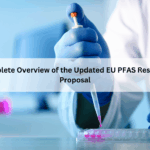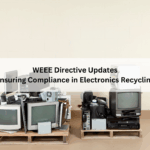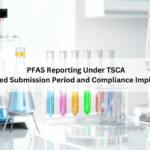Per- and polyfluoroalkyl substances (PFAS), widely known as “forever chemicals,” are synthetic compounds valued for their resistance to heat, water, and oil. While they have been used extensively across industries, their extreme persistence in the environment and strong links to health risks such as cancer, hormonal disruption, and immune system damage have raised global concern.
In response, 2025 marks a significant turning point, with both the European Union (EU) and the United States (US) advancing landmark PFAS regulations. These measures aim to reduce human exposure, protect the environment, and increase corporate accountability across industries.
Until recently, PFAS oversight was inconsistent, fragmented, and inadequate. This led to:
- Widespread contamination of soil, water, and the food chain.
- Growing health concerns including cancer risks and weakened immune responses.
- Minimal regulatory scrutiny over thousands of PFAS compounds in circulation.
- Poor labeling and lack of traceability throughout the supply chain.
- No unified global framework to regulate PFAS.
These gaps in regulation triggered urgent action from governments, creating a pressing compliance requirement for manufacturers, importers, and suppliers worldwide.
In response, the EU and US have introduced stricter PFAS measures between 2024–2025. These include bans, reporting requirements, stricter monitoring, and cleanup responsibilities. Together, these regulations aim to protect human health, restore contaminated environments, and enforce transparency throughout the supply chain.
European Union (EU)
- Universal PFAS Ban Proposal under REACH: Review of restrictions covering 10,000+ PFAS compounds, with final approval anticipated by September 2025.
- Firefighting Foam Regulations: Ban on PFHxA in foams from October 2026 (training/testing) and October 2029 (civil aviation).
- France’s National Measures: Ban on PFAS in cosmetics, ski waxes, and textiles starting January 2026, with an extended ban on all textiles by 2030.
- EU Action Plan (July 2025): Monitoring programs, pollution hotspot identification, and financial incentives for remediation and innovation.
United States (US)
- TSCA PFAS Reporting Rule: Historical reporting of PFAS usage (2011–2022) due May 2025; extensions to 2026 for smaller entities.
- TRI Expansion: Over 200 PFAS compounds added to annual reporting from March 2025; exemptions removed.
- CERCLA Designation: PFOA and PFOS designated as hazardous substances, increasing liability for contamination cleanup.
- Drinking Water Regulations: Maximum Contaminant Levels (MCLs) enforced for PFOA and PFOS, with additional limits under review; deadlines through 2031.
- State-Level Action: Stricter state-specific rules (e.g., Maine, Delaware), adding complexity for companies operating nationwide.
Impact: These rules represent a turning point in chemical governance, pushing industries to adapt product design, strengthen supply chain disclosures, and adopt proactive risk management. Companies that fail to comply face fines, recalls, liability, and loss of market access.
As PFAS regulations tighten across the EU and US, businesses face mounting pressure to adapt product designs, strengthen supply chain oversight, and comply with complex reporting requirements. Staying compliant is not only critical to maintaining market access but also essential for protecting brand reputation and mitigating long-term liability. ComplianceXL supports organizations in this transition by offering end-to-end PFAS compliance solutions—from material screening and regulatory mapping to supplier audits, documentation, and post-market surveillance. With our expertise, companies can confidently navigate evolving regulations, reduce risks, and demonstrate their commitment to environmental responsibility while building long-term business resilience.
FAQs:
1.Why are PFAS regulations important?
They protect human health and the environment by restricting substances that are persistent, bioaccumulative, and highly toxic.
2.What are the penalties for non-compliance?
Penalties may include fines, product recalls, and long-term liability, particularly under CERCLA in the US and REACH in the EU.
3.How do PFAS rules affect product design and sourcing?
Manufacturers must rethink formulations, materials, and supplier disclosures to ensure compliance and avoid costly redesigns or disruptions.
4.Are PFAS restrictions harmonized internationally?
Not yet. Regulations differ across the EU, US federal agencies, and US states, making localized compliance strategies essential.





